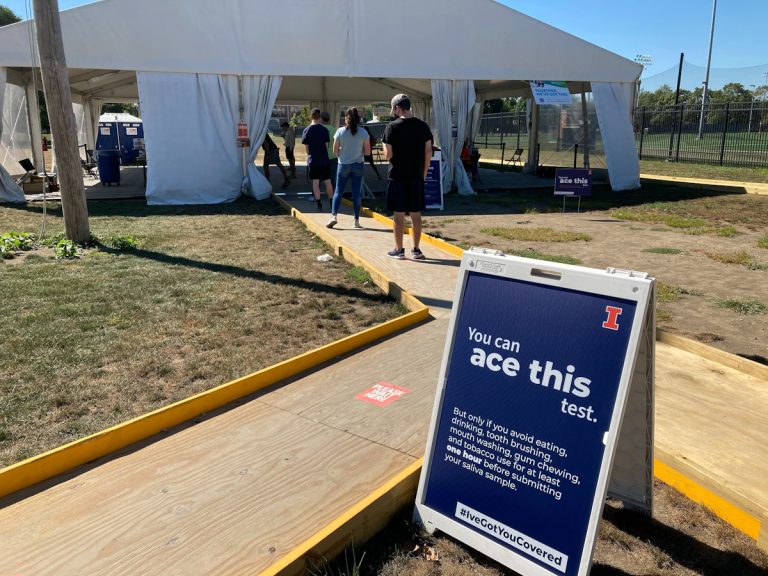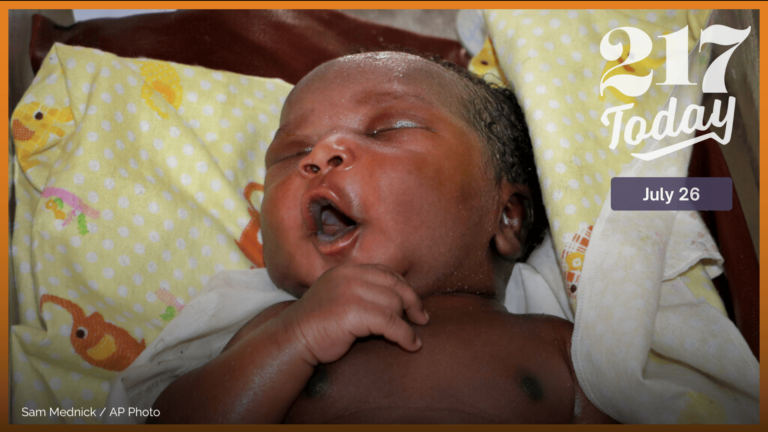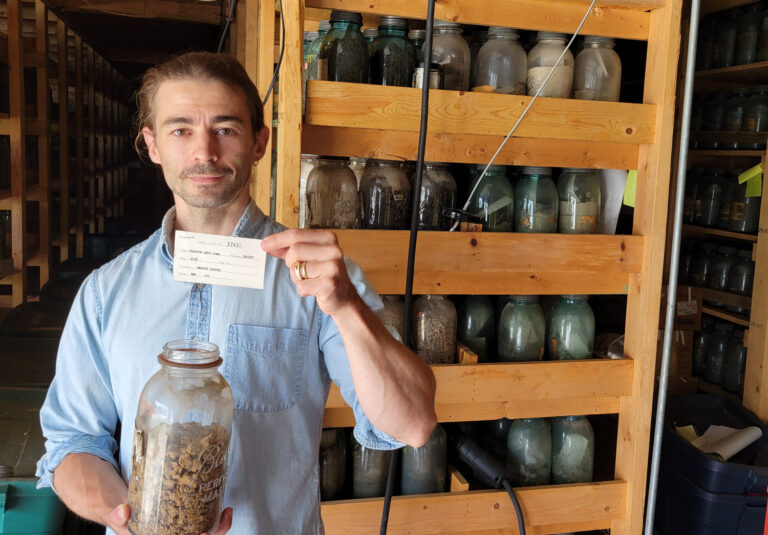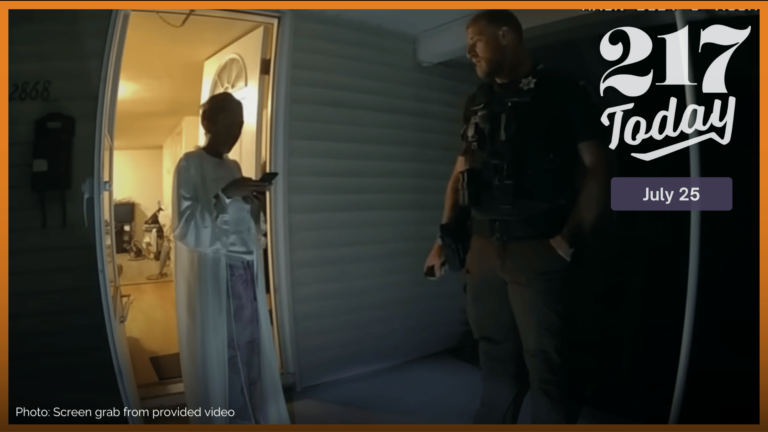URBANA – Undergraduate students comprised the vast majority of COVID-19 cases at the University of Illinois at Urbana-Champaign during the fall semester, with the highest infection rates occurring among students living in fraternities, sororities and other private, campus-certified housing.
U of I data provided to Illinois Newsroom show that 3,226 undergrads tested positive for the virus between Aug. 16 — the week before the start of the semester when twice-a-week testing became mandatory — and the last day of in-person classes, Nov. 20.
Among those cases, 1,051 — or about a third — were among undergraduate students living in private certified housing, which includes Greek houses and other privately owned residences, who made up about 13% of undergrads tested during the first and last weeks of the in-person semester.
Fifteen percent of all undergrad infections — or 483 cases — were among students living in university housing, who made up about 22% of undergrads tested. The remaining 52% — or 1,692 cases — occurred among undergraduate students living off campus, who comprised about 65% of undergrads tested.
Illinois Newsroom asked the U of I to provide the total number of students living in different housing situations during the fall semester: in university housing, fraternities and sororities, other private certified housing, and off campus. Campus officials said they could not provide exact numbers because they fluctuated over the course of the semester. Instead, we were provided with the total number of students tested during the first and last weeks of the in-person semester — or the weeks of Aug. 24 and Nov. 16. All data provided — that were used as the basis of this reporting — are posted in the tables below.
Campus officials acknowledge that the incidence of coronavirus infection among students living in Greek and other private certified housing this semester was much higher than students in other living situations. Spokeswoman Robin Kaler said in an email that it is “very likely because of the congregate settings combined with the social nature of these organizations.”
Calls to police — reporting parties and large gatherings — reflect that as well, she says.
“The tightly connected social networks in many of these houses means that COVID-19 can spread quickly, especially given those super-spreading events,” Kaler says. “This seems to have been the trend across the nation.”
Breaking down the numbers
A total of 3,885 COVID-19 cases were identified through the campus’ testing program between Aug. 16 and Nov. 20, according to the U of I’s public COVID-19 database. That figure includes the 3,226 cases among undergrads, for whom regular testing was mandatory in most cases.
Another 233 cases were among graduate students, for whom regular testing was mandatory only for those using campus facilities. The remainder of cases occurred among faculty, staff and others who had access to campus testing, including University Laboratory High School students, members of university-related organizations, and other campus affiliates.
Some students started the semester living on or near campus and decided to return home mid-semester — or vice versa, Kaler says. Fluctuating circumstances make it challenging for the university to know exactly how many students tested positive in each living situation, she says.
Assuming the number of undergraduate students tested during the first week of the semester — 24,112 — as an approximation of the true number, a total of 3,226 COVID-19 cases from Aug. 16 through Nov. 20 means about 13% of all undergraduates tested positive for the coronavirus during the in-person semester.
Calculations for the percentage of the undergrad population testing positive in each living situation — based on number of students tested at the start of the in-person semester — break down as follows: 37% of all students in fraternities and sororities tested positive for the virus, 29% in other private certified housing, 9% in university housing and 11% in off campus housing.
For graduate students, 233 positive cases among 8,645 students tested during the first week suggest a much lower rate of infection compared to undergrads: about 3%.
Campus officials previously estimated that between 35,000 and 38,000 students lived on or near campus this semester. Kaler says that range was based on enrollment information for those who started the semester with at least one in-person class, as well as information provided by students about where they would be living this semester.
In hindsight, the estimate was too high, she says. A few thousand students did not respond to the campus’ request for information about their living situation, “and we had to assume that those students would be on campus and required to participate in the COVID testing program… As the Office of Student Conflict Resolution has reached out to students for non-compliance, they were able to confirm that many were, in fact, not living in the community.”
Asked for an explanation as to why only 20,076 undergrads got tested during the week of Nov. 16 — compared to 24,112 during the week of Aug. 24, Kaler says about 600 students received exemptions from testing, and others “came and went throughout the semester as their individual situations changed.”
“The staff in the Office of Student Conflict Resolution worked diligently all semester to track down who was local and not testing,” Kaler says.
Looking ahead
Campus leaders monitored the COVID-19 testing data in real time, Kaler says, and adjusted their response accordingly.
Early in the semester, after a spike in cases attributed to super-spreader events caused by students who hosted or attended parties while knowingly infected, the U of I implemented a two-week ban on non-essential activities and also began testing students in “hot spots” three of more times a week until they were able to reverse the spike in cases.
“We also added the [SHIELD T30] program of notifying those who test positive within 30 minutes of receiving the results of their tests, so we could get them into isolation before they transmitted the virus to the others who live with and near them,” Kaler said.
In an interview in mid-November, U of I epidemiologist Becky Smith, who helped develop the campus’ reopening plans, said the initial approach relied too heavily on technology. While research shows frequent mass testing is a critical component to safely reopening college campuses, the U of I strategy did not take into consideration certain aspects of human behavior that could thwart reopening plans.
“The biggest lesson is that technology cannot save us from a pandemic,” she said.
Going forward, Kaler says the campus is working with some of its own social scientists to “better understand decision making and risk taking among our various student populations, so we can continue to refine our testing, educational efforts and other aspects of our COVID-19 response.”
Lee V. Gaines and Christine Herman are reporters at Illinois Public Media. Follow them on Twitter: @LeeVGaines and @CTHerman
NOTE: Another caveat about the data: Student test results were sorted based on age, with the assumption that those born prior to 1997 are graduate students and those born after are undergraduates. A spokesperson for the campus, Robin Kaler, says the university’s data experts are “confident the actual breakdown would not be very far off these numbers.”







